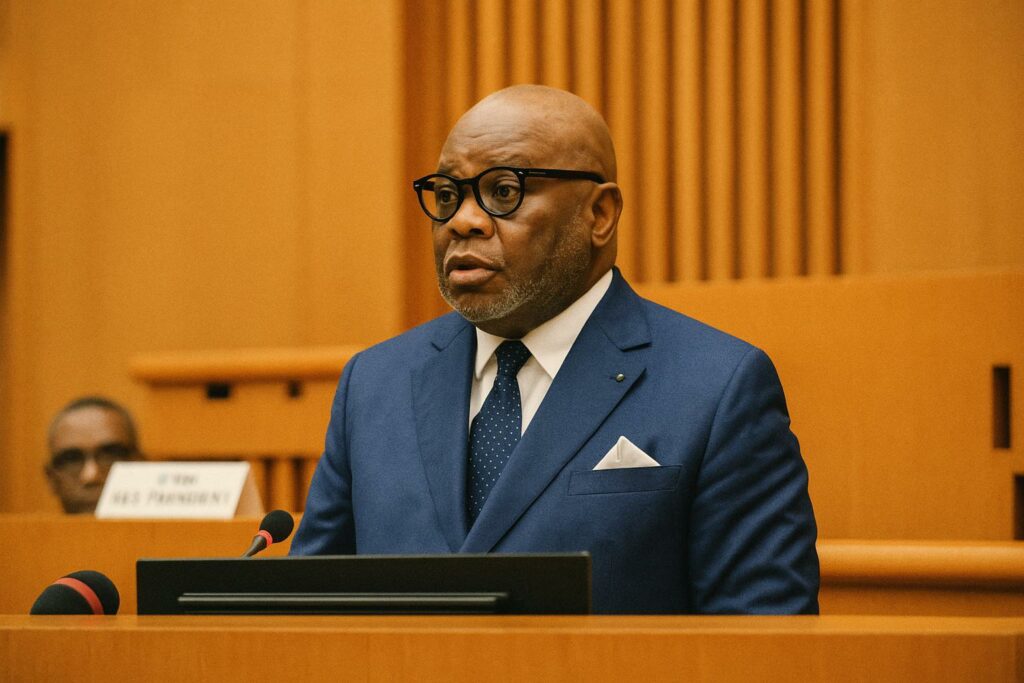Strategic Imperatives behind the Recent Shortages
The sudden queues that snaked around filling stations in Brazzaville and Pointe-Noire earlier this year were the visible symptom of a structural imbalance long acknowledged by policymakers. Congo’s national refinery, Coraf, meets barely sixty percent of domestic demand, leaving the remainder to volatile international markets. Rising post-pandemic mobility, increased industrial activity and the redirection of some regional flows toward Europe after the Ukrainian crisis aggravated this supply-demand gap, officials explained during a strenuous question-and-answer session at the National Assembly on 4 July. In diplomatic circles the episode was viewed less as an isolated crisis than as a litmus test of the Republic’s capacity to protect macro-economic stability while preserving social cohesion.
Emergency Import Programmes and their Early Impact
Minister of Hydrocarbons Bruno Jean Richard Itoua disclosed that the National Oil Company, SNPC, had chartered successive cargoes designed to guarantee 105 days of gasoline and 70 days of gasoil autonomy, a figure corroborated by shipping data monitored by the African Energy Chamber (2024 outlook). Two vessels have already discharged and additional parcels are expected before 10 July, enabling a progressive return to equilibrium. Diplomats stationed in Brazzaville note that the operation dubbed Coup de poing signals governmental agility: by combining Coraf’s maximised output with spot purchases, the administration avoided recourse to abrupt price liberalisation, thereby insulating the most vulnerable households from imported inflationary pressures.
Coraf’s Upstream Optimisation and Railway Logistics Revival
Beyond firefighting, the cabinet has restored the continuous flow of crude to Coraf through a revised lifting schedule with upstream operators, mitigating the plant’s previous feedstock intermittency. Parallel discussions with the Ministry of Transport envisage rehabilitating the Congo–Ocean Railway, whose capacity constraints had forced costly road hauling of white products. Analysts at Bloomberg (12 June 2024) estimate that each additional fuel train reduces logistical expenses by up to twenty percent, releasing fiscal space for health and education. The government also authorised the use of auxiliary storage sites around Oyo and Dolisie, thereby raising strategic stocks to the two-month threshold recommended by the Central African Economic and Monetary Community.
Long-Term Vision: Pointe-Noire–Brazzaville Pipeline and New Depots
At the heart of the long-term blueprint lies a 600-kilometre multi-product pipeline linking the Atlantic hub of Pointe-Noire to the capital. A framework agreement with the Russian Federation was inked on the sidelines of the St Petersburg International Economic Forum, providing for three storage depots totalling 300 000 cubic metres, triple the present capacity of Sclog. Energy economists argue that the project could cut inland transport costs by forty percent and lower carbon intensity, aligning with commitments made under the COP27 accord. The venture also resonates with the African Union’s Agenda 2063, positioning Congo as a potential regional supplier once neighbouring states face similar market tightness.
Pricing Policy, Social Equity and the IMF Conundrum
A technical mission from the International Monetary Fund recommended full deregulation of pump prices to stem the downstream deficit. While acknowledging the macro-rationale, Minister Itoua emphasised that a sudden tariff surge would constrain mobility for lower-income citizens and potentially exert upward pressure on food prices. The presidency therefore favours a phased approach: efficiency gains from logistics, targeted subsidies and digital monitoring of service-station inventories are expected to narrow the deficit without social dislocation. That stance, diplomats observe, underscores Brazzaville’s determination to uphold the principle of shared prosperity embedded in the National Development Plan 2022-2026 while honouring commitments under the current Extended Credit Facility.
Regional Reverberations and Diplomatic Outlook
The resolution of Congo’s fuel crunch carries implications beyond its borders. Landlocked Central African partners such as the Central African Republic and parts of northern Angola intermittently rely on transit supplies routed through Pointe-Noire. A stable Congolese supply chain therefore reinforces regional energy security and enhances Brazzaville’s diplomatic leverage within economic blocs. Western investors, encouraged by the recent Fitch affirmation of Congo’s credit outlook, are monitoring whether transparent pipeline governance can become a showcase for public–private partnerships in Central Africa. As the queues recede, the prevailing sentiment in chancelleries is that the government’s calibrated mix of emergency action and structural foresight may offer a replicable model for commodity-dependent economies navigating post-pandemic volatility.

